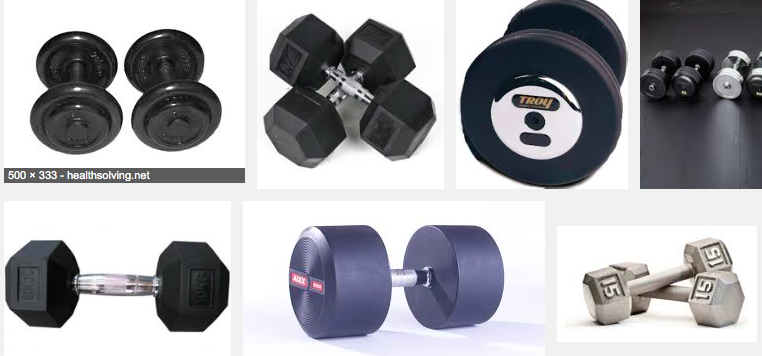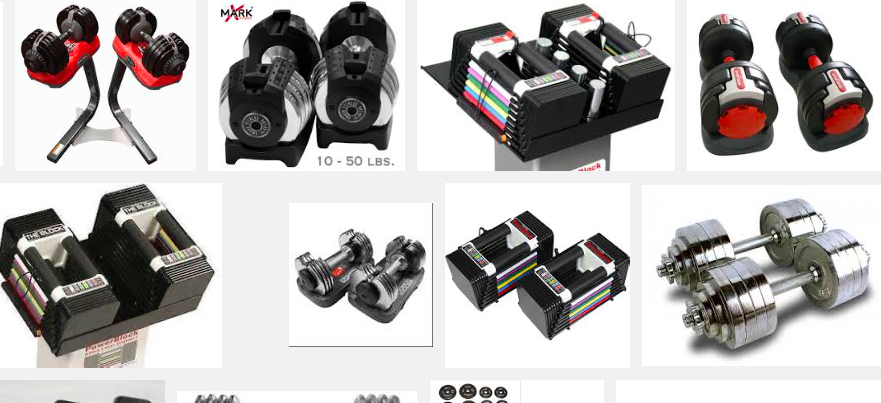In just about every gym you'll find a guy doing curls too close to a rack of weights. Never mind the dummy, let's concentrate on the dumbbells (the weights on the rack). Dumbbells are excellent tools for increasing strength, muscle tone and muscle endurance. Meaning they can help with just about everything you're trying to achieve by working out. A dumbbell is a free weight, meaning it can be moved around, characterized by a bar with weighted plates on each end.
 Dumbbells come in either fixed or adjustable weights. If the dumbbells are fixed weight, the weight is usually written or etched into the sides of the plates. Fixed weight dumbbells range from as light as 1 pound up to as heavy as 200 pounds, though most commercial gyms will max out around 120 pounds.
Dumbbells come in either fixed or adjustable weights. If the dumbbells are fixed weight, the weight is usually written or etched into the sides of the plates. Fixed weight dumbbells range from as light as 1 pound up to as heavy as 200 pounds, though most commercial gyms will max out around 120 pounds.
 Adjustable dumbbells, like fixed weight, come in many different varieties but for the most part they all work the same way. You have the center bar and you (evenly) add plates until you reach the desired weight. The weights are then held in place by a collar that is either spring loaded or locked into place.
Adjustable dumbbells, like fixed weight, come in many different varieties but for the most part they all work the same way. You have the center bar and you (evenly) add plates until you reach the desired weight. The weights are then held in place by a collar that is either spring loaded or locked into place.
Dumbbells are great because they allow the user the option of using both hands simultaneously or individually. Dumbbells allow for alternating exercises (one side then the other) and reciprocating exercises (both arms moving at the same time but in opposite directions). Dumbbells are also an effective tool because you can move them in just about every way imaginable depending on how heavy they are.
The last benefit I just mentioned is also big drawback of the dumbbell. The fact that it can and will move in a variety of directions make the dumbbell a tool that novice exercisers have to be careful with. That being said, I would suggest when starting to exercise with dumbbells to err on the lighter side. This way the worst that happens is that the exercise is too easy and you make it a little heavier the next set.
So (not so) politely say excuse me to the dummy in front of the rack and grab a pair of dumbbells and start pressing, squatting, deadlifting and what ever other exercise you can think of. Leave a comment if you have any questions and share with someone with who's been wondering about those weights on the rack.

